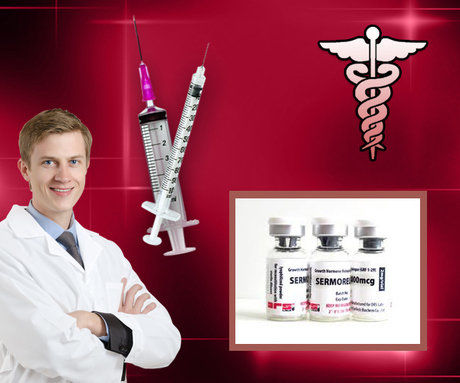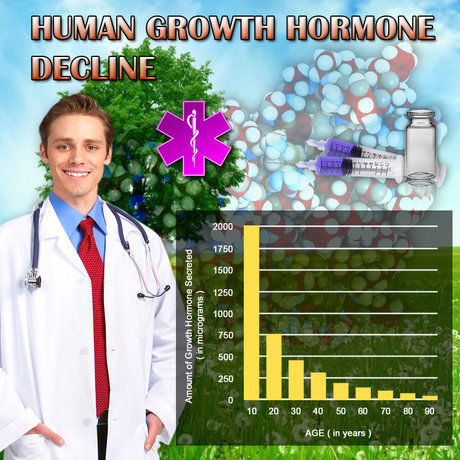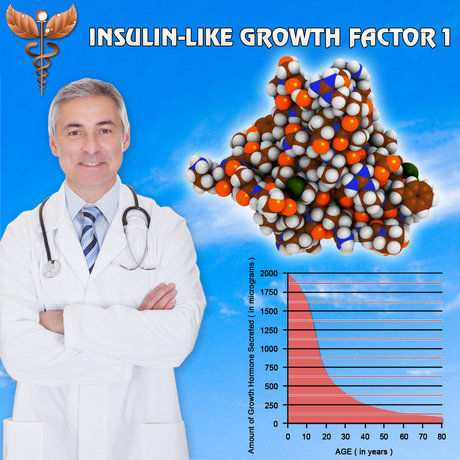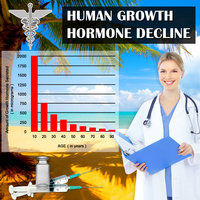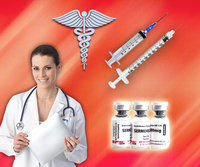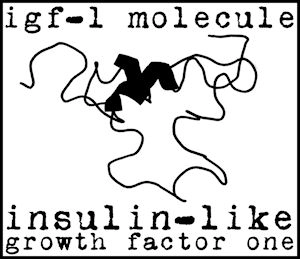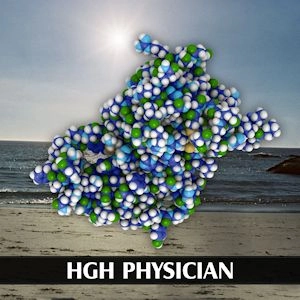Introduction to Hamstring Injuries in Soccer
Hamstring injuries are among the most common and debilitating issues faced by soccer players, particularly midfielders who are constantly required to sprint, change direction, and engage in high-intensity movements. For American male soccer players, these injuries not only hinder performance but can also lead to significant time away from the sport. Understanding the anatomy and function of the hamstring muscles is crucial in developing effective prevention strategies.
Anatomy and Function of the Hamstring Muscles
The hamstring muscle group, located at the back of the thigh, consists of three muscles: the biceps femoris, semitendinosus, and semimembranosus. These muscles play a pivotal role in knee flexion and hip extension, movements that are fundamental to the dynamic actions of soccer midfielders. The high demand placed on these muscles during matches and training increases the risk of strains and tears, especially if the muscles are not adequately conditioned or if there is an imbalance in muscle strength and flexibility.
Common Causes of Hamstring Injuries in Soccer
Several factors contribute to the prevalence of hamstring injuries among soccer players. These include inadequate warm-up routines, muscle fatigue, previous injuries, and poor biomechanics. Midfielders, who often cover the most ground during a game, are particularly susceptible due to the repetitive nature of their movements. Additionally, the transition from low to high-intensity activities without proper preparation can exacerbate the risk of injury.
Innovative Sports Medicine Techniques for Prevention
To mitigate the risk of hamstring injuries, sports medicine professionals have developed a range of innovative techniques tailored specifically for American male soccer midfielders. These include:
1. Dynamic Warm-Up Protocols
A comprehensive dynamic warm-up is essential to prepare the muscles for the demands of soccer. This should include exercises that mimic the movements of the game, such as lunges, high knees, and leg swings. These activities increase blood flow to the muscles, enhance flexibility, and reduce the likelihood of injury.
2. Strength and Conditioning Programs
Targeted strength training focusing on the hamstrings, as well as the opposing muscle groups such as the quadriceps, can help maintain muscle balance and reduce injury risk. Eccentric exercises, which involve lengthening the muscle under tension, have been shown to be particularly effective in strengthening the hamstrings.
3. Flexibility and Stretching Routines
Incorporating regular stretching routines can improve the elasticity of the hamstring muscles, reducing the risk of strains. Both static and dynamic stretching should be part of a midfielder's daily regimen, with a focus on maintaining flexibility without compromising muscle strength.
4. Biomechanical Analysis and Correction
Utilizing advanced technology to analyze a player's running and movement patterns can identify biomechanical issues that may predispose them to injury. Corrective exercises and adjustments to technique can then be implemented to address these issues.
5. Recovery and Rehabilitation Strategies
Post-match and post-training recovery is crucial for preventing hamstring injuries. Techniques such as foam rolling, massage, and proper hydration can aid in muscle recovery. In the event of an injury, a structured rehabilitation program that gradually reintroduces the player to full activity is essential to prevent re-injury.
Conclusion: A Holistic Approach to Injury Prevention
Preventing hamstring injuries in American male soccer midfielders requires a multifaceted approach that combines proper warm-up, strength and conditioning, flexibility, biomechanical analysis, and effective recovery strategies. By integrating these sports medicine techniques into their training regimen, players can enhance their performance and longevity in the sport, ensuring they remain at the top of their game.
Contact Us For A Fast And Professional Response

- Preventing Ankle Injuries in Volleyball: Sports Medicine and Technology Solutions [Last Updated On: March 3rd, 2025] [Originally Added On: March 3rd, 2025]
- Hamstring Injuries in Sprinters: Treatment, Rehabilitation, and Prevention Strategies [Last Updated On: March 17th, 2025] [Originally Added On: March 17th, 2025]
- Snowboarding Wrist Injuries: Prevention, Treatment, and Rehabilitation Strategies for American Males [Last Updated On: March 18th, 2025] [Originally Added On: March 18th, 2025]
- Optimizing Recovery for American Male Martial Artists: A Holistic Sports Medicine Approach [Last Updated On: March 19th, 2025] [Originally Added On: March 19th, 2025]
- Sports Medicine: Enhancing Performance and Longevity in American Male Water Polo Players [Last Updated On: March 19th, 2025] [Originally Added On: March 19th, 2025]
- Sports Medicine's Crucial Role in Preventing Overuse Injuries in American Male Climbers [Last Updated On: March 19th, 2025] [Originally Added On: March 19th, 2025]
- Sports Medicine's Vital Role in Enhancing Triathlete Performance and Health [Last Updated On: March 20th, 2025] [Originally Added On: March 20th, 2025]
- Surfing Injuries in American Males: Prevalence, Prevention, and Sports Medicine Advances [Last Updated On: March 20th, 2025] [Originally Added On: March 20th, 2025]
- Sports Medicine Revolutionizes CrossFit: Enhancing Safety and Performance for American Males [Last Updated On: March 21st, 2025] [Originally Added On: March 21st, 2025]
- Preventing Shoulder Injuries in Lacrosse Goalies: A Comprehensive Sports Medicine Approach [Last Updated On: March 21st, 2025] [Originally Added On: March 21st, 2025]
- Sports Medicine Innovations Aid American Male Rowers with Lower Back Pain Management [Last Updated On: March 21st, 2025] [Originally Added On: March 21st, 2025]
- Sports Medicine: Enhancing Health and Performance in American Male Figure Skating [Last Updated On: March 21st, 2025] [Originally Added On: March 21st, 2025]
- Sports Medicine: Enhancing Performance and Longevity for American Male Table Tennis Players [Last Updated On: March 21st, 2025] [Originally Added On: March 21st, 2025]
- Beach Volleyball Ankle Injuries: Prevention, Training, and Rehabilitation Strategies [Last Updated On: March 22nd, 2025] [Originally Added On: March 22nd, 2025]
- Sports Medicine Enhances Performance and Longevity in American Male Polo Players [Last Updated On: March 22nd, 2025] [Originally Added On: March 22nd, 2025]
- BMX Challenges and Recovery: The Vital Role of Sports Medicine for American Males [Last Updated On: March 23rd, 2025] [Originally Added On: March 23rd, 2025]
- Sports Medicine's Impact on Injury Management in American Male Field Hockey Players [Last Updated On: March 23rd, 2025] [Originally Added On: March 23rd, 2025]
- Ankle Health Strategies for American Male Basketball Point Guards: Prevention to Rehabilitation [Last Updated On: March 23rd, 2025] [Originally Added On: March 23rd, 2025]
- Sports Medicine's Vital Role in Enhancing Soccer Defenders' Recovery and Performance [Last Updated On: March 23rd, 2025] [Originally Added On: March 23rd, 2025]
- Sports Medicine Revolutionizes Recovery for American Male Ice Hockey Players [Last Updated On: March 23rd, 2025] [Originally Added On: March 23rd, 2025]
- Ultimate Frisbee: Knee Health Strategies for American Male Athletes [Last Updated On: March 24th, 2025] [Originally Added On: March 24th, 2025]
- Sports Medicine's Role in Enhancing American Male Fencers' Performance and Longevity [Last Updated On: March 24th, 2025] [Originally Added On: March 24th, 2025]
- Sports Medicine Advances Aid Hip Recovery in American Male Track Cyclists [Last Updated On: March 24th, 2025] [Originally Added On: March 24th, 2025]
- Rotator Cuff Injuries in American Male Swimmers: Diagnosis, Treatment, and Prevention [Last Updated On: March 24th, 2025] [Originally Added On: March 24th, 2025]
- Optimizing Recovery for American Football Wide Receivers: A Sports Medicine Approach [Last Updated On: March 24th, 2025] [Originally Added On: March 24th, 2025]
- Sports Medicine's Role in Enhancing American Male Swimmers' Health and Performance [Last Updated On: March 24th, 2025] [Originally Added On: March 24th, 2025]
- Sports Medicine Enhances Career Longevity for American Male Badminton Players [Last Updated On: March 24th, 2025] [Originally Added On: March 24th, 2025]
- Sports Medicine Revolutionizes Training for American Male Cyclists [Last Updated On: March 25th, 2025] [Originally Added On: March 25th, 2025]
- Sports Medicine Enhances Safety and Performance in American Male Trampoline Gymnastics [Last Updated On: March 25th, 2025] [Originally Added On: March 25th, 2025]
- Sports Medicine's Role in Preventing Shin Splints in American Male Runners [Last Updated On: March 25th, 2025] [Originally Added On: March 25th, 2025]
- Managing Groin Injuries in American Male Hockey Players: Strategies and Prevention [Last Updated On: March 25th, 2025] [Originally Added On: March 25th, 2025]
- Sports Medicine Revolutionizes Career Longevity for American Male Baseball Pitchers [Last Updated On: March 26th, 2025] [Originally Added On: March 26th, 2025]
- Sports Medicine Revolutionizes Training and Health for American Male Handball Athletes [Last Updated On: March 26th, 2025] [Originally Added On: March 26th, 2025]
- Sports Medicine Advances Aid Lacrosse Attackmen with Shoulder Injury Prevention and Treatment [Last Updated On: March 26th, 2025] [Originally Added On: March 26th, 2025]
- Cross-Country Skiing: Knee Health Strategies for American Male Skiers [Last Updated On: March 26th, 2025] [Originally Added On: March 26th, 2025]
- Sports Medicine's Role in Preventing Stress Fractures in American Male Runners [Last Updated On: March 26th, 2025] [Originally Added On: March 26th, 2025]
- Optimizing Recovery for American Male Soccer Goalkeepers: A Holistic Approach [Last Updated On: March 26th, 2025] [Originally Added On: March 26th, 2025]
- Preventing Achilles Tendon Injuries in American Male Runners: Sports Medicine Strategies [Last Updated On: March 26th, 2025] [Originally Added On: March 26th, 2025]
- Tendonitis in American Male Tennis Players: Sports Medicine Treatment and Prevention Strategies [Last Updated On: March 26th, 2025] [Originally Added On: March 26th, 2025]
- Lacrosse Midfielders' Hip Health: Sports Medicine Innovations and Rehabilitation Strategies [Last Updated On: March 26th, 2025] [Originally Added On: March 26th, 2025]
- Preventing Back Injuries in American Male Rowers: A Holistic Sports Medicine Approach [Last Updated On: March 27th, 2025] [Originally Added On: March 27th, 2025]
- Speed Skating Muscle Health: Strategies and Innovations for American Male Athletes [Last Updated On: March 27th, 2025] [Originally Added On: March 27th, 2025]
- Sports Medicine Revolutionizes Performance in American Male Volleyball [Last Updated On: March 27th, 2025] [Originally Added On: March 27th, 2025]
- Rugby Sevens' Rise in U.S. and Vital Role of Sports Medicine for Male Athletes [Last Updated On: March 27th, 2025] [Originally Added On: March 27th, 2025]
- Sports Medicine: Enhancing Performance and Health in American Male Track and Field Athletes [Last Updated On: March 28th, 2025] [Originally Added On: March 28th, 2025]
- Sports Medicine: Essential for American Male Rugby Forwards' Health and Performance [Last Updated On: March 28th, 2025] [Originally Added On: March 28th, 2025]
- Sports Medicine Boosts Career Longevity for American Male Baseball Outfielders [Last Updated On: March 29th, 2025] [Originally Added On: March 29th, 2025]
- Sports Medicine's Role in Managing Injuries for American Male Swimmers [Last Updated On: March 29th, 2025] [Originally Added On: March 29th, 2025]
- Knee Health Management for Football Running Backs: Prevention, Treatment, and Rehabilitation [Last Updated On: March 29th, 2025] [Originally Added On: March 29th, 2025]
- Optimizing Recovery for American Male Soccer Forwards: A Comprehensive Approach [Last Updated On: March 29th, 2025] [Originally Added On: March 29th, 2025]
- Sports Medicine: Enhancing Performance and Health in Basketball Forwards [Last Updated On: March 30th, 2025] [Originally Added On: March 30th, 2025]
- Sports Medicine's Role in Enhancing American Male Volleyball Players' Performance and Health [Last Updated On: April 1st, 2025] [Originally Added On: April 1st, 2025]
- Sports Medicine Revolutionizes Performance and Health for American Male Cyclists [Last Updated On: April 1st, 2025] [Originally Added On: April 1st, 2025]
- Sports Medicine Revolutionizes Performance and Health in Male Track and Field Athletes [Last Updated On: April 4th, 2025] [Originally Added On: April 4th, 2025]
- Cross-Country Skiing and Knee Health: Insights for American Male Skiers [Last Updated On: April 5th, 2025] [Originally Added On: April 5th, 2025]
- Sports Medicine: Enhancing Health and Performance for Basketball Forwards [Last Updated On: April 6th, 2025] [Originally Added On: April 6th, 2025]
- Lacrosse Midfielders' Hip Injuries: Sports Medicine's Role in Treatment and Prevention [Last Updated On: April 6th, 2025] [Originally Added On: April 6th, 2025]
- Preventing Achilles Tendon Injuries in American Male Runners: A Sports Medicine Approach [Last Updated On: April 8th, 2025] [Originally Added On: April 8th, 2025]
- Managing Groin Injuries in American Male Hockey: Diagnosis, Treatment, and Prevention Strategies [Last Updated On: April 8th, 2025] [Originally Added On: April 8th, 2025]
- Preventing Hamstring Injuries in American Male Soccer Midfielders: A Comprehensive Guide [Last Updated On: April 9th, 2025] [Originally Added On: April 9th, 2025]
- Sports Medicine: Enhancing Health and Performance in American Male Rugby Forwards [Last Updated On: April 10th, 2025] [Originally Added On: April 10th, 2025]
- Sports Medicine: Extending Careers of American Male Baseball Outfielders [Last Updated On: April 10th, 2025] [Originally Added On: April 10th, 2025]
- Knee Health Strategies for American Football Running Backs: Prevention and Recovery [Last Updated On: April 11th, 2025] [Originally Added On: April 11th, 2025]
- Sports Medicine: Enhancing Performance and Health in American Male Track Athletes [Last Updated On: April 11th, 2025] [Originally Added On: April 11th, 2025]
- Optimizing Recovery for American Male Soccer Forwards: A Comprehensive Guide [Last Updated On: April 12th, 2025] [Originally Added On: April 12th, 2025]
- Sports Medicine Revolutionizes Performance and Health in American Male Cycling [Last Updated On: April 12th, 2025] [Originally Added On: April 12th, 2025]
- Sports Medicine's Role in Enhancing American Male Swimmers' Performance and Health [Last Updated On: April 13th, 2025] [Originally Added On: April 13th, 2025]
- Sports Medicine Revolutionizes Hip Injury Management in American Male Lacrosse Midfielders [Last Updated On: April 16th, 2025] [Originally Added On: April 16th, 2025]
- Sports Medicine's Vital Role for American Male Rugby Forwards' Health and Performance [Last Updated On: April 16th, 2025] [Originally Added On: April 16th, 2025]
- Sports Medicine's Vital Role in Enhancing Volleyball Performance and Career Longevity [Last Updated On: April 17th, 2025] [Originally Added On: April 17th, 2025]
- Managing Groin Injuries in Hockey: Diagnosis, Treatment, and Prevention Strategies [Last Updated On: April 18th, 2025] [Originally Added On: April 18th, 2025]
- Sports Medicine's Role in Preventing Achilles Tendon Injuries in American Male Runners [Last Updated On: April 18th, 2025] [Originally Added On: April 18th, 2025]
- Sports Medicine's Role in Protecting Football Running Backs' Knee Health [Last Updated On: April 19th, 2025] [Originally Added On: April 19th, 2025]
- Preventing Hamstring Injuries in Soccer: A Holistic Sports Medicine Approach [Last Updated On: April 19th, 2025] [Originally Added On: April 19th, 2025]
- Knee Health Strategies for American Male Cross-Country Skiers [Last Updated On: April 19th, 2025] [Originally Added On: April 19th, 2025]
- Optimizing Recovery for American Male Soccer Forwards: Sports Medicine Strategies [Last Updated On: April 19th, 2025] [Originally Added On: April 19th, 2025]
- Sports Medicine: Enhancing Performance and Career Longevity for Basketball Forwards [Last Updated On: April 20th, 2025] [Originally Added On: April 20th, 2025]
